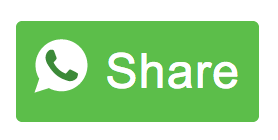You might not have heard of WhatsApp before Facebook bought it for $19 billion. But the chat app has a gazillion users and enough cred for Apple to lift some of its ideas for its own messaging app yesterday.
 Its reach isn’t as readily apparent as, say, Facebook’s or Twitter’s, because sharing on those platforms is (broadly) public — you can see the shares and the traffic. But for the few sites that have experimented with encouraging WhatsApp sharing have seen big results.
Its reach isn’t as readily apparent as, say, Facebook’s or Twitter’s, because sharing on those platforms is (broadly) public — you can see the shares and the traffic. But for the few sites that have experimented with encouraging WhatsApp sharing have seen big results.
First, BuzzFeed started using a WhatsApp share button on mobile and found that users were tapping it more often than they were the neighboring Twitter button. Then USA Today’s sports site FTW found the same thing, with WhatsApp getting 18 percent of share-button taps (vs. 13 percent for Twitter, 34 percent for Facebook, and 35 percent for email).
Want to have your own WhatsApp sharing button on your news site? You can, apparently, with this unofficial WhatsApp button generator from TeamKBX and Kris Siepert. It uses WhatsApp custom URL scheme to do it.
Adding a WhatsApp button is a little more complicated than adding a Twitter or Facebook button because WhatsApp sharing only works on iPhones. (WhatsApp itself works on Android and other platforms, of course, but only the iPhone app works with the URL scheme.) Siepert’s generator aims to take care of that and only appear on devices that can use it.
I should note that it seemed a little buggy when I played around with it; the generator only seemed to work if you set a custom URL rather than opting to use the current URL. (That isn’t hard to pull off in a CMS like WordPress — just reference the current permalink.) But even if this button generator is just a starting point, WhatsApp sharing is reaching a level that seems to require some attention from publishers.
One comment:
Kurikulum Berbasis Kompetensi
Trackbacks:
Leave a comment